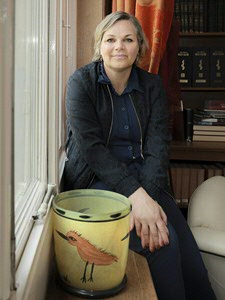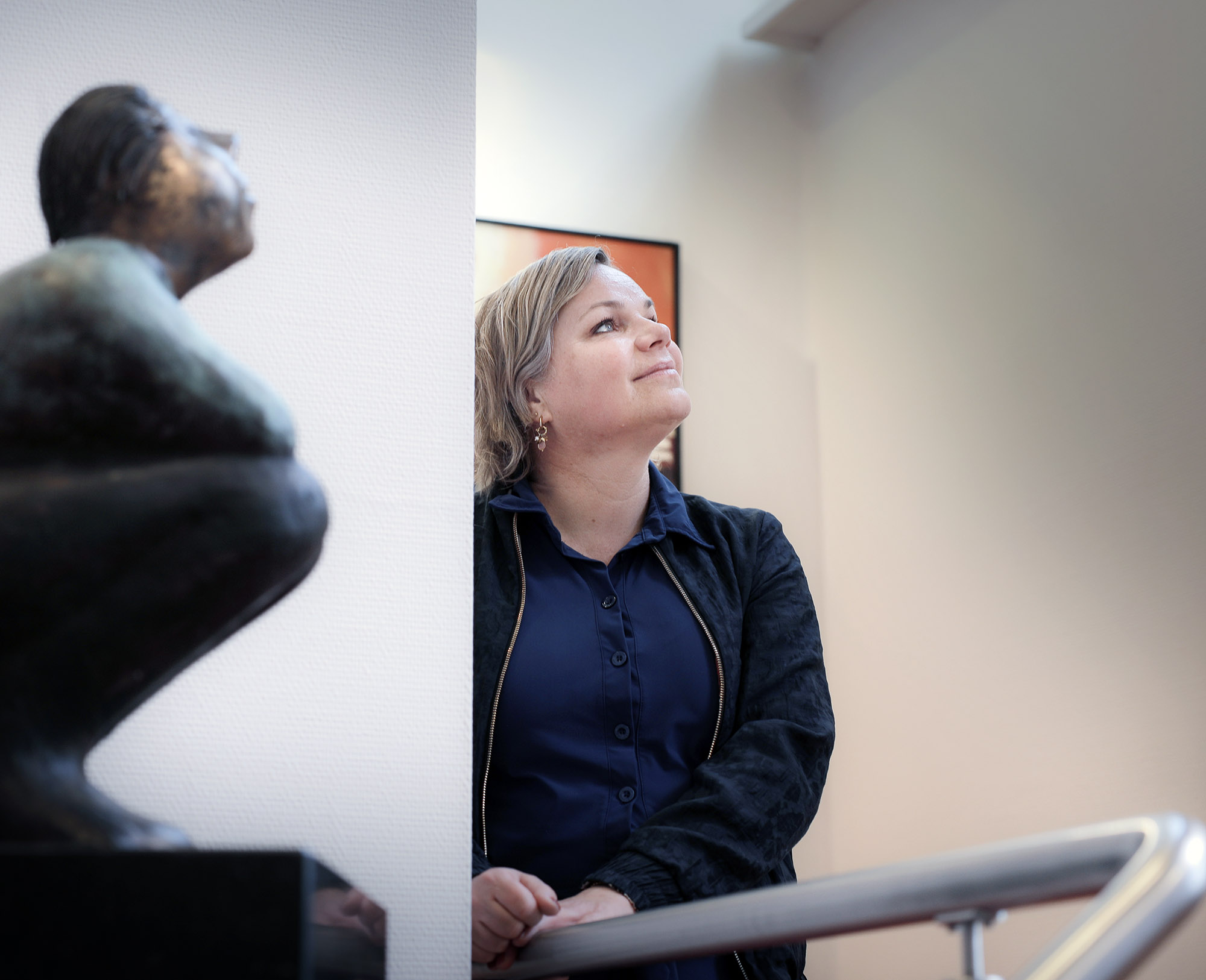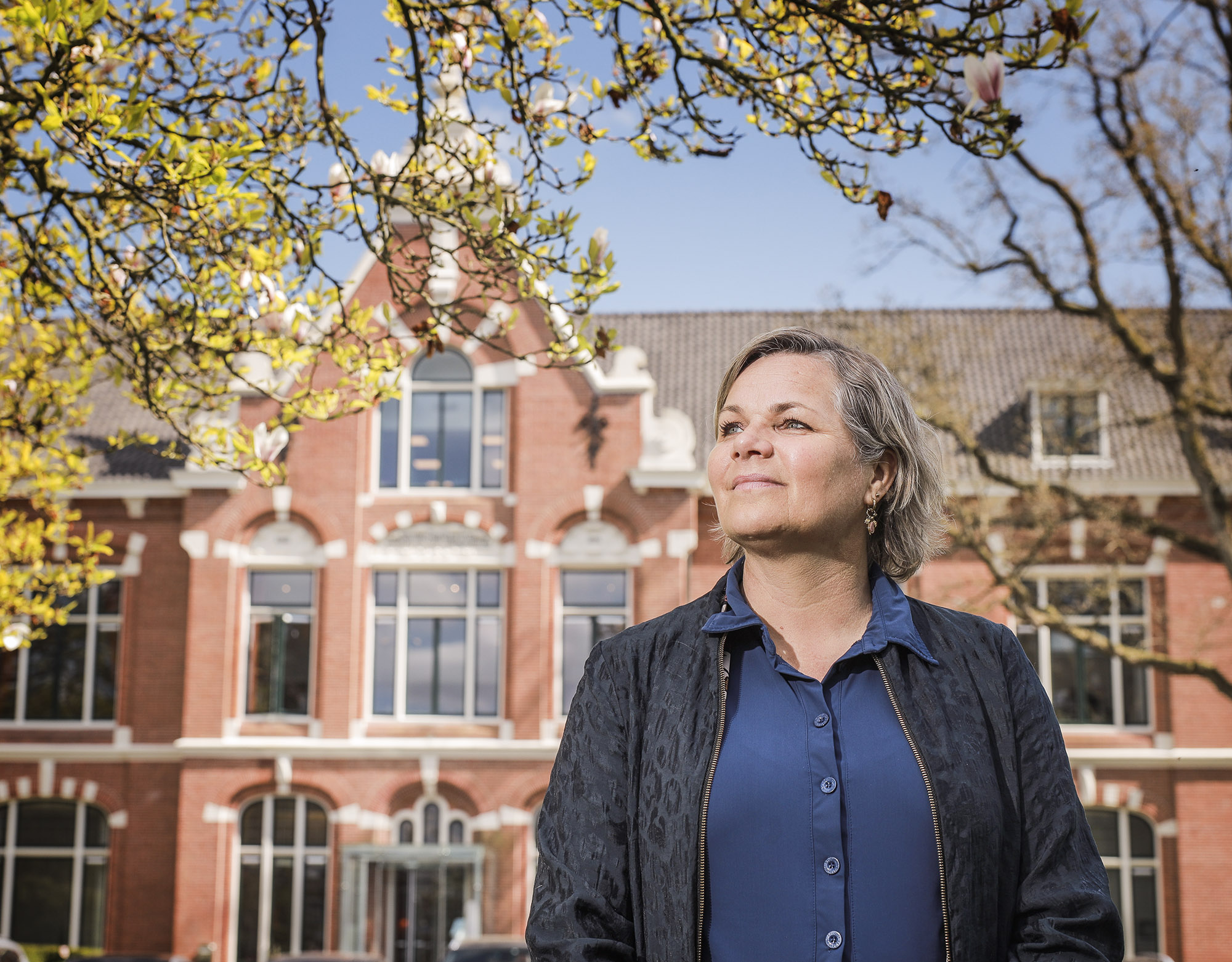A happy life with a mental illness

Stynke Castelein is dedicated to helping people with severe mental illnesses to regain their place in society and to give meaning to their lives. She and her team are researching new treatment methods for people with severe mental illnesses. Her motto? Let’s boost recovery!
Text: Beau Oldenburg / Photos: Henk Veenstra
In the Netherlands, around 281,000 people suffer from a serious mental illness (SMI). One thing they have in common is not so much the type of illness, but the long-term and severe suffering they experience as a result. In addition to psychological suffering, their condition also leads to problems in other areas of life. According to the Trimbos Institute, 78% of this group do not have a paid job and are therefore financially vulnerable. On a social level, too, many people struggle: as many as 80% feel lonely. A staggering 40% even feel that they no longer have a place in society at all.
Enjoy life
Stynke Castelein (Professor by special appointment of Recovery from Severe Mental Illness and Head of Research at Lentis Research, the scientific branch of Lentis GGZ) and her team are researching new treatment methods for people with severe mental illnesses. The driving force behind her work is her desire to ensure that these people can also lead the most enjoyable lives possible. Castelein: ‘After I graduated in sociology some 22 years ago, I ended up working as a research assistant at the psychosis department at the UMCG. That was the first time I had ever met people suffering from psychosis at such close quarters. I prepared the clients for examinations, had coffee with them, ate on the ward every week, and had some extraordinary conversations. It made me realize that these young people, just like everyone else – regardless of how ill they are – want to get back to their normal lives as soon as possible.’
Three-pronged approach to recovery
Castelein now works for Lentis GGZ, a mental healthcare institution, and advocates a broader approach to the recovery of people with serious mental illnesses. She argues that we should not only focus on the clinical symptoms, but also on the client’s social and personal recovery. ‘Thanks to my sociological background, I see recovery as much more than just treating the illness. I see it as a three-pronged approach. Once you have recovered, you can re-join society and rebuild your personal life in a meaningful way.’

Not just numbers
Several mental health institutions have adopted Castelein’s views on recovery, and more and more research is being done on the three types of recovery. Castelein’s group also conducts its own research. To measure recovery, they use both quantitative and qualitative research methods. ‘We don’t just look at the scores on a questionnaire – how do you feel today on a scale of one to ten?; we also take people’s stories into account. Other researchers are sometimes a bit sceptical about that, but if you collect all those stories in a systematic way, it’s just as good scientific data. I think this combination of numbers and experiences is incredibly valuable.’
Decision tool
For Castelein and her team, the research agenda is driven by the problems that clients and practitioners come up against in practice. ‘For example, we noticed that therapists had so much screening data on their clients that they couldn’t see the wood for the trees anymore. Physical complaints, in particular, were overlooked and therefore not always treated. To tackle this problem, PhD student Lukas Roebroek developed a digital decision tool that shows at a glance the care needs and the effective treatment options according to national guidelines and care standards.’ Roebroek’s research shows that the tool helps practitioners and patients to consult more closely and improves the treatment of patients’ physical complaints.
Valuable perspectives
Before Castelein and her colleagues embark on a new project, they always ask for feedback from the field. For example, questionnaires are only ever distributed once they have been extensively reviewed by experts, the Client Council, and colleagues. Engaging people from the field in this way enables researchers to spot things that they might otherwise have overlooked. One example is Castelein and her team’s research into the negative consequences of the coronavirus pandemic, and they discovered that the lockdown had actually been a relief for a number of clients with autism. ‘That’s the great thing about engaging people from the field. If I’d done my research in isolation, I might have only asked questions about what people missed and what troubled them. But because I had heard from colleagues that many clients also had positive experiences, I was able to incorporate that in the design of the study.’

Sharing knowledge
In addition to publishing her research results in open-access scientific journals, Castelein also actively shares her findings with clients and colleagues. She also regularly talks about her research in the media. In 2018, she even won the Groningen Woman in Media Award. ‘There’s so much knowledge out there, and I think it’s extremely important that it reaches the people it concerns in an easily accessible way.’
Influencer
Castelein recently started an Instagram account called ‘Let’s boost recovery’ where she shares her research in an accessible way. Her 13-year-old daughter gives her advice. Castelein says with a smile: ‘My daughter showed me how everything works so I can now do it myself. Her classmates and my son’s classmates also follow me, so they also learn about our research, which is great! One pupil even asked if he could do an internship with us!’
| Last modified: | 01 June 2022 12.00 p.m. |
More news
-
09 April 2024
Kirsten van den Bosch: 'Connecting students with the work field really is achievable in every programme'
Dr Kirsten van den Bosch en her team won the Best Practice Award 2024 with their initiative to connect students with organizations to solve real problems within Academic Learning Communities.
-
03 April 2024
Research: much stress among Groningers due to gas extraction issues, including among the elderly
The gas extraction issue still has its effect on people in Groningen. Questionnaire research shows that people who had multiple instances of damage to their homes have increasingly poor health. In addition, interviews with elderly people show a...
-
05 March 2024
'Ordinary Joes can also be creative'
Organizational psychologist Eric Rietzschel researches creativity in the workplace. According to him, creativity enables us to move forward, but there is also a downside.
